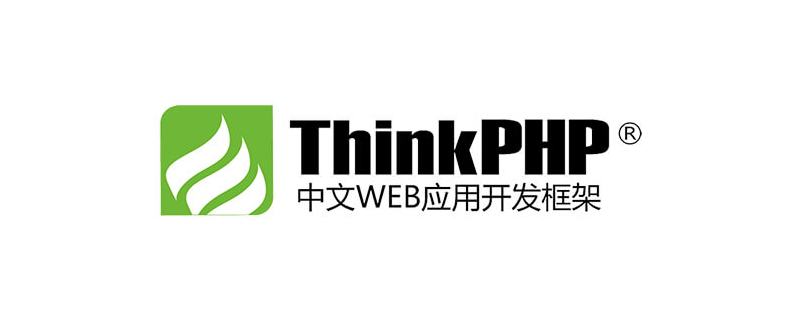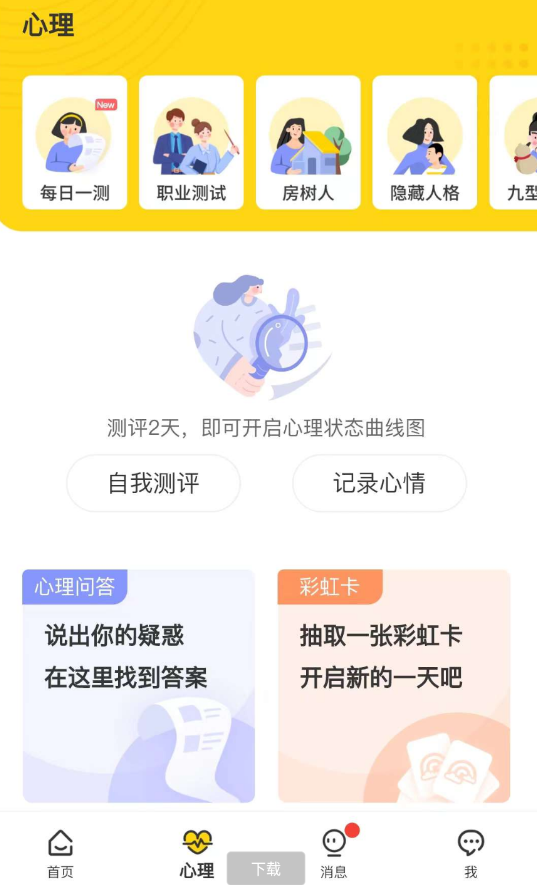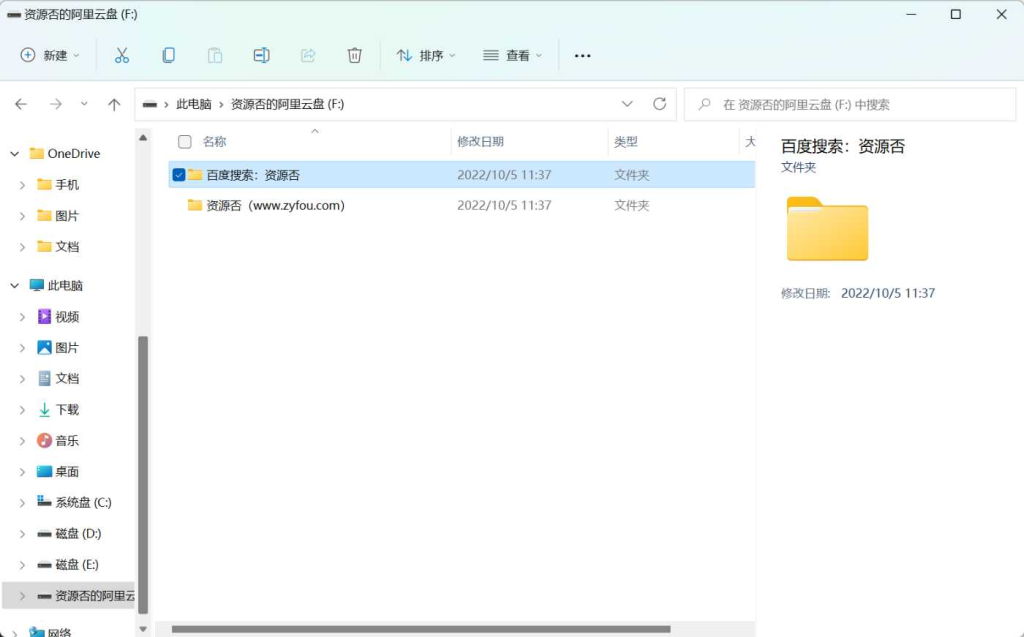thinkphp是为了简化企业级应用开发和敏捷web应用开发而诞生的。最早诞生于2006年初,2007年元旦正式更名为thinkphp,并且遵循apache2开源协议发布。thinkphp从诞生以来一直秉承简洁实用的设计原则,在保持出色的性能和至简的代码的同时,也注重易用性。并且拥有众多原创功能和特性,在社区团队的积极参与下,在易用性、扩展性和性能方面不断优化和改进。

thinkphp中间件是什么?
从5.1.6+版本开始,正式引入中间件的支持。
中间件主要用于拦截或过滤应用的http请求,并进行必要的业务处理。
定义中间件
立即学习“PHP免费学习笔记(深入)”;
可以通过命令行指令快速生成中间件
php think make:middleware Check
这个指令会 application/http/middleware目录下面生成一个Check中间件。
<?php namespace apphttpmiddleware; class Check { public function handle($request, Closure $next) { if ($request->param('name') == 'think') { return redirect('index/think'); } return $next($request); } }
中间件的入口执行方法必须是handle方法,而且第一个参数是Request对象,第二个参数是一个闭包。
中间件handle方法的返回值必须是一个Response对象。
在这个中间件中我们判断当前请求的name参数等于think的时候进行重定向处理。否则,请求将进一步传递到应用中。要让请求继续传递到应用程序中,只需使用 $request 作为参数去调用回调函数 $next 。
在某些需求下,可以使用第三个参数传入额外的参数。
<?php namespace apphttpmiddleware; class Check { public function handle($request, Closure $next, $name) { if ($name == 'think') { return redirect('index/think'); } return $next($request); } }
前置/后置中间件
中间件是在请求具体的操作之前还是之后执行,完全取决于中间件的定义本身。
下面是一个前置行为的中间件
<?php namespace apphttpmiddleware; class Before { public function handle($request, Closure $next) { // 添加中间件执行代码 return $next($request); } }
下面是一个后置行为的中间件
<?php namespace apphttpmiddleware; class After { public function handle($request, Closure $next) { $response = $next($request); // 添加中间件执行代码 return $response; } }
来个比较实际的例子,我们需要判断当前浏览器环境是在微信或支付宝
namespace apphttpmiddleware; /** * 访问环境检查,是否是微信或支付宝等 */ class InAppCheck { public function handle($request, Closure $next) { if (preg_match('~micromessenger~i', $request->header('user-agent'))) { $request->InApp = 'WeChat'; } else if (preg_match('~alipay~i', $request->header('user-agent'))) { $request->InApp = 'Alipay'; } return $next($request); } }
然后在你的移动版的module里添加一个middleware.php文件
例如:/path/application/mobile/middleware.php
return [ apphttpmiddlewareInAppCheck::class, ];
然后在你的controller中可以通过$this->request->InApp获取相关的值
注册中间件
路由中间件
最常用的中间件注册方式是注册路由中间件
Route::rule('hello/:name','hello') ->middleware('Auth');
或者使用完整的中间件类名
Route::rule('hello/:name','hello') ->middleware(apphttpmiddlewareAuth::class);
支持注册多个中间件
Route::rule('hello/:name','hello') ->middleware(['Auth', 'Check']);
V5.1.7+版本,你可以直接在应用配置目录下的middleware.php中先预定义中间件(其实就是增加别名标识),例如:
return [ 'auth'=>apphttpmiddlewareAuth::class, 'check'=>apphttpmiddlewareCheck::class ];
然后直接在路由中使用中间件别名注册
Route::rule('hello/:name','hello') ->middleware(['auth', 'check']);
V5.1.8+版本开始,可以支持使用别名定义一组中间件,例如:
return [ 'check'=>[ apphttpmiddlewareAuth::class, apphttpmiddlewareCheck::class ], ];
然后,直接使用下面的方式注册中间件
Route::rule('hello/:name','hello') ->middleware('check');
支持对路由分组注册中间件
Route::group('hello', function(){ Route::rule('hello/:name','hello'); })->middleware('Auth');
V5.1.8+版本开始支持对某个域名注册中间件
Route::domain('admin', function(){ // 注册域名下的路由规则 })->middleware('Auth');
如果需要传入额外参数给中间件,可以使用
Route::rule('hello/:name','hello') ->middleware('Auth:admin');
如果使用的是常量方式定义,可以在第二个参数传入中间件参数。
Route::rule('hello/:name','hello') ->middleware(Auth::class, 'admin');
如果需要定义多个中间件,使用数组方式
Route::rule('hello/:name','hello') ->middleware([Auth::class, 'Check']);
可以统一传入同一个额外参数
Route::rule('hello/:name','hello') ->middleware([Auth::class, 'Check'], 'admin');
或者单独指定中间件参数。
Route::rule('hello/:name','hello') ->middleware(['Auth:admin', 'Check:editor']);
使用闭包定义中间件
你不一定要使用中间件类,在某些简单的场合你可以使用闭包定义中间件,但闭包函数必须返回Response对象实例。
Route::group('hello', function(){ Route::rule('hello/:name','hello'); })->middleware(function($request,Closure $next){ if ($request->param('name') == 'think') { return redirect('index/think'); } return $next($request); });
全局中间件
你可以在应用目录下面定义middleware.php文件,使用下面的方式:
<?php return [ apphttpmiddlewareAuth::class, 'Check', 'Hello', ];
中间件的注册应该使用完整的类名,如果没有指定命名空间则使用apphttpmiddleware作为命名空间。
全局中间件的执行顺序就是定义顺序。可以在定义全局中间件的时候传入中间件参数,支持两种方式传入。
<?php return [ [apphttpmiddlewareAuth::class, 'admin'], 'Check', 'Hello:thinkphp', ];
上面的定义表示 给Auth中间件传入admin参数,给Hello中间件传入thinkphp参数。
模块中间件
V5.1.8+版本开始,支持模块中间件定义,你可以直接在模块目录下面增加middleware.php文件,定义方式和应用中间件定义一样,只是只会在该模块下面生效。
控制器中间件
V5.1.17+版本开始,支持为控制器定义中间件。首先你的控制器需要继承系统的thinkController类,然后在控制器中定义middleware属性,例如:
<?php namespace appindexcontroller; use thinkController; class Index extends Controller { protected $middleware = ['Auth']; public function index() { return 'index'; } public function hello() { return 'hello'; } }
当执行index控制器的时候就会调用Auth中间件,一样支持使用完整的命名空间定义。
如果需要设置控制器中间的生效操作,可以如下定义:
<?php namespace appindexcontroller; use thinkController; class Index extends Controller { protected $middleware = [ 'Auth' => ['except' => ['hello'] ], 'Hello' => ['only' => ['hello'] ], ]; public function index() { return 'index'; } public function hello() { return 'hello'; } }
中间件向控制器传参
可以通过给请求对象赋值的方式传参给控制器(或者其它地方),例如
<?php namespace apphttpmiddleware; class Hello { public function handle($request, Closure $next) { $request->hello = 'ThinkPHP'; return $next($request); } }
注意,传递的变量名称不要和param变量有冲突。
然后在控制器的方法里面可以直接使用
public function index(Request $request) { return $request->hello; // ThinkPHP }
本文来自ThinkPHP框架技术文章栏目:http://www.php.cn/phpkj/thinkphp/

















